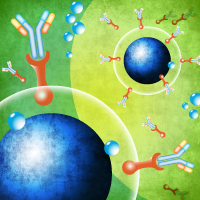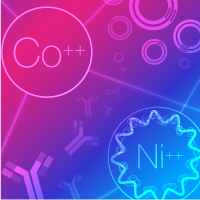Antibody purification resins—an alternative to Protein A

Antibody purification using thiophilic resins is a simple, powerful, and economical alternative to Protein A, the most widely used method of immunoglobulin purification. Although Protein A antibody purification is very common, there are certain types of antibodies, such as the single-chain antibodies IgE, IgY, and IgM, that cannot be purified using Protein A. An alternative antibody purification method, thiophilic affinity chromatography (TAC), is ideal for these types of applications, as well as immunoglobulin purification in general, including IgG, IgM, IgA, Fab and Fc fragments, and C3 and C4 complement factors.
Antibody purification using thiophilic resins is a simple, powerful, and economical alternative to Protein A, the most widely used method of immunoglobulin purification. Although Protein A antibody purification is very common, there are certain types of antibodies, such as the single-chain antibodies IgE, IgY, and IgM, that cannot be purified using Protein A. An alternative antibody purification method, thiophilic affinity chromatography (TAC), is ideal for these types of applications, as well as immunoglobulin purification in general, including IgG, IgM, IgA, Fab and Fc fragments, and C3 and C4 complement factors.
TAC is a powerful and simple method for the purification of proteins—in particular, immunoglobulins. It is an economical alternative to Protein A for purifying antibodies from whole serum and tissue culture. In comparison to Protein A-based immunoadsorbents, thiophilic adsorbents have a broader affinity for immunoglobulins. Further, more than 99% of total proteins are recovered using a thiophilic adsorbent, in comparison to less than 92% for phenyl and 75% for octyl agarose adsorbents.
TAC has broad specificity for immunoglobulins of different classes and subclasses from a wide range of species and has capacity similar to that of other affinity methods.
Its advantages are the simplicity of the sample preparation, applicability with a range of source materials and protein concentration ranges, and gentle elution conditions, unlike the popular Protein A/Protein G separation methods that require extreme pH for elution, which the antibodies may not be stable enough to accommodate.
Overview
Thiophilic-Superflow Resin utilizes thiophilic adsorption chromatography. With this technique, protein adsorbs to a sulfone thioether ligand. The adsorption of different proteins can be promoted by adding different salts to the mixture. Varying the concentration of the loading salt can affect the adsorption affinities of IgG, IgM, IgA, Fab and Fc fragments, and C3 and C4 complement factors.
Purification with Thiophilic-Superflow Resin offers several advantages over purification with Protein A, the conventional method used for immunoglobulin purification:
- Purification at neutral pH
- Broader selectivity (IgY, IgM, IgE, scAb)
- High linear flow rates
- High capacity (15–20 mg Ab/ml resin)
- Reusability
- Higher stability of the purified product
More Information
Applications
- Antibody purification, including IgG, IgM, and chicken IgY
Properties of Thiophilic-Superflow Resin
| Feature | Thiophilic-Superflow Resin |
| Batch/gravity | Yes |
| FPLC | Yes |
| Scale | Analytical, preparative |
| Preparative production capacity (mg IgG/ml absorbent) | 25 |
| Matrix | Cross-linked agarose |
| Maximum linear flow rate (cm/min) | 5.0 |
| Maximum volumetric flow rate (ml/min) at 5 x 1 cm i.d. | 4.0 |
| pH stability | 2–10 |
| Supplied as | Bulk/slurry 50% in 25% ethanol |
| Storage | 4°C, do not freeze |
Additional product information
Please see the product's Certificate of Analysis for information about storage conditions, product components, and technical specifications. Please see the Kit Components List to determine kit components. Certificates of Analysis and Kit Components Lists are located under the Documents tab.
An efficient, versatile, and economical alternative to Protein A purification
Thiophilic antibody purification resins
An efficient, versatile, and economical alternative to Protein A purification.
Takara Bio USA, Inc.
United States/Canada: +1.800.662.2566 • Asia Pacific: +1.650.919.7300 • Europe: +33.(0)1.3904.6880 • Japan: +81.(0)77.565.6999
FOR RESEARCH USE ONLY. NOT FOR USE IN DIAGNOSTIC PROCEDURES. © 2025 Takara Bio Inc. All Rights Reserved. All trademarks are the property of Takara Bio Inc. or its affiliate(s) in the U.S. and/or other countries or their respective owners. Certain trademarks may not be registered in all jurisdictions. Additional product, intellectual property, and restricted use information is available at takarabio.com.




